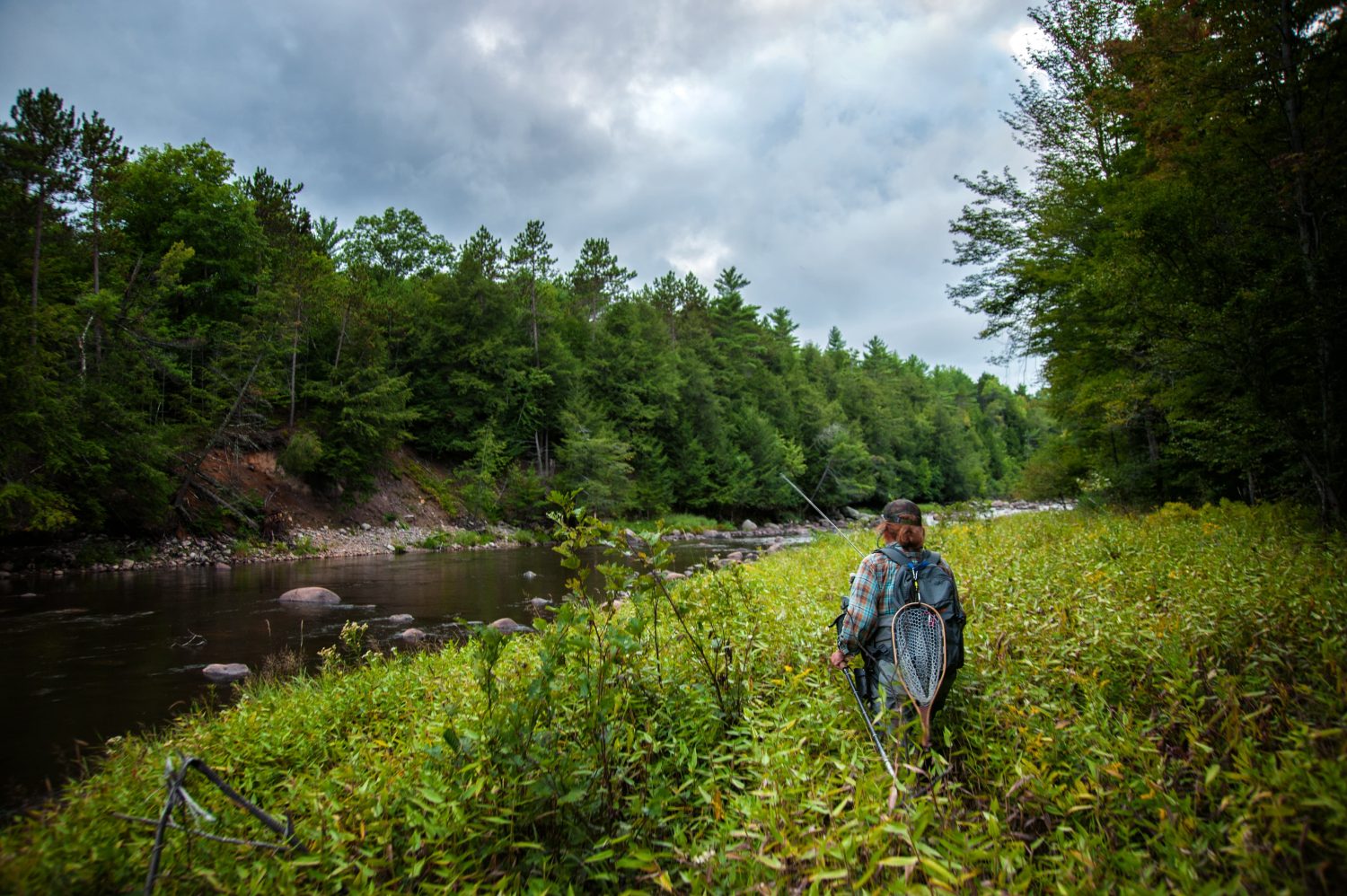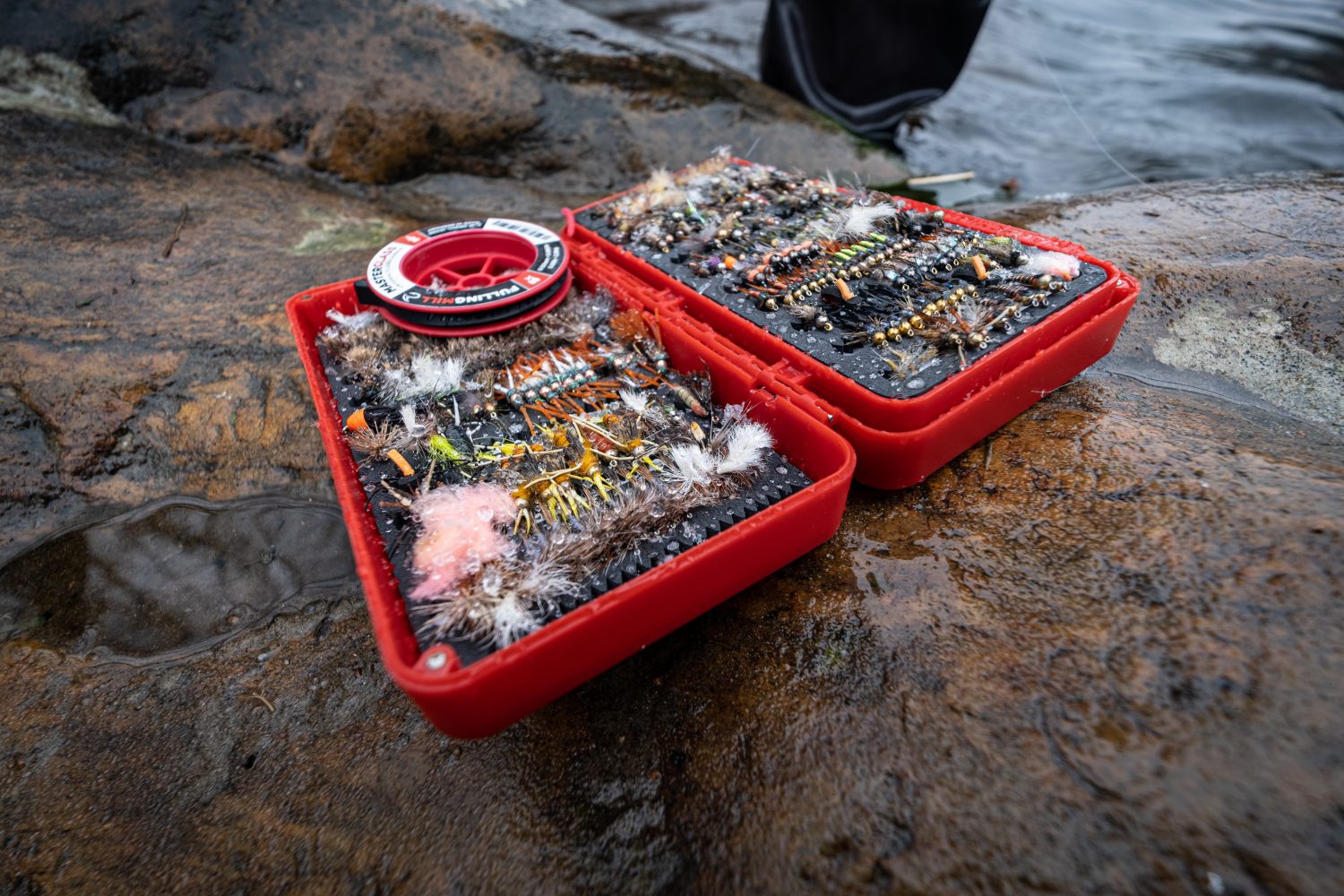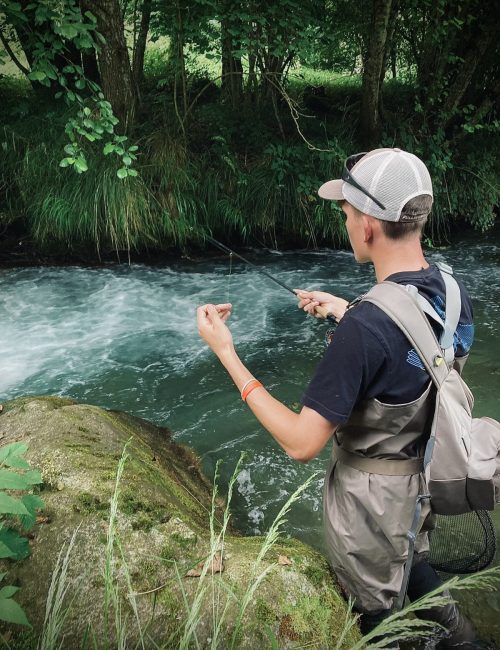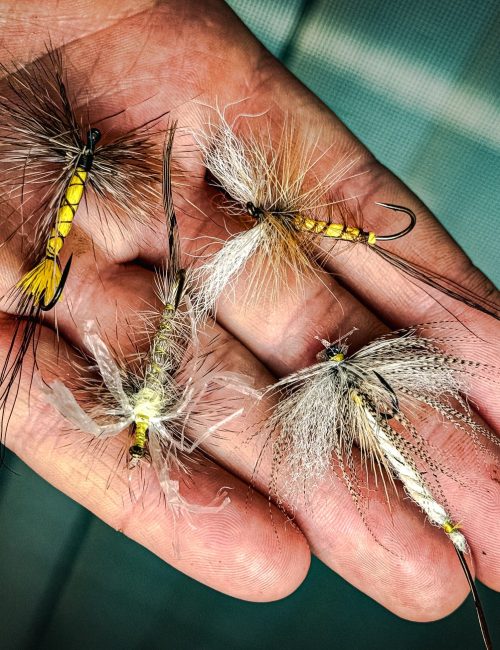Here in the East, fall foam season offers up some of the best dry fly action of the season. Cooling temps, along with bountiful terrestrial food sources (hoppers, crickets, ants etc.) make for some great days on the water.
While typically associated with western rivers, the east has an excellent foam season of its own, especially if you pay attention to a few factors.
Where
This is probably the most important factor to ensure some proper hopper action. As anglers we have to keep in mind where on the river are fish likely to see the highest population of terrestrials? Cut banks with tall grass, sections of river near open fields, even small spits of vegetation on the edges make good habitat for larger insects. That said, trout are habitual and opportunistic. So, while locations with higher populations of food may be better suited it doesn’t mean you can’t go prospecting elsewhere. This can be successful, though you will have a better shot if you adhere to fishing the locations I mention above.

How
There are several techniques when it comes to fishing larger foam patterns. Movement is one of the fundamental keys to success. Terrestrials, as the name suggests, are preferential to terra firma and therefore are usually pretty pissed to be in water. What does this typically mean? They make a lot of movement—relative to a bug, that is. I like to tell people to think like a bug when moving a dry fly. Subtle is better. It’s easy to overdo it.

Another nice part with big foam patterns is that delicate presentations need not apply. Smack that sucker on the water. Similar to bass fishing, trout use their lateral lines to detect food and when a big juicy hopper lands its not looking for zero splash entry. In fact, they are less likely to find your fly if you don’t splash it.
Whether a rock, log, drop off, trough, or some other form of structure, fish these patterns tight. You are much more likely to entice a big fish if you’re fly is close to structure where they feel safe.

Lastly, take advantage of all that buoyancy and hang a nymph off the bottom. The hopper dropper technique is renowned for a reason. Not only are you covering multiple strata, you are literally doubling your chances for success. Insider tip here: a hopper and a wet fly/soft hackle can be deadly as both are intended to have a bit of movement.

When
With night time temps dropping, fall presents anglers with a different time frame for the best results. I have found that mid day through early afternoon temps usually work well for both trout metabolism and terrestrial movement. Once the temperature dips most action on top seems to cease. Wind is another variable to keep in mind as it can cause some unexpected landings form many a terrestrial. It will blow them out of the grass and bushes, making them land right in front of hungry trout. So, don’t be shy when it’s a bit windy this time of year. It can make for some great fishing. I love warm, gusty fall days to throw some foam on my local rivers.

Hopefully this will help you get out and chase a few risers this coming fall. As always be sure to experiment with these techniques and figure out your local waters. Pattern size and color vary a lot from zone to zone, so dig in and see what those fish want.






